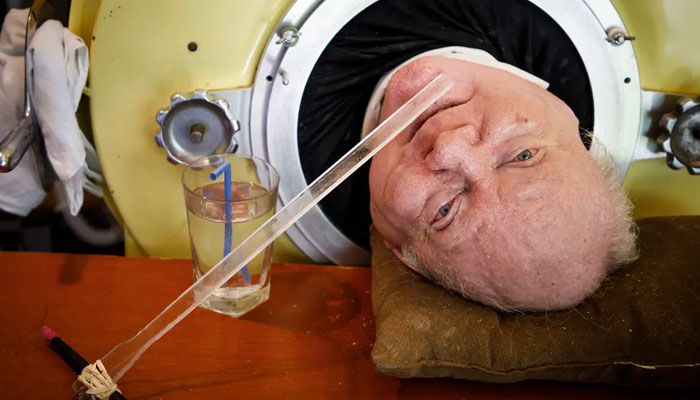
A guy known as “Polio Paul” has apparently lived for seven decades inside a 600-pound iron lung while refusing to switch to a more advanced device.
Paul Alexander, now 77, was 6 years old when he developed polio in 1952.
He was recognised as the longest iron lung patient ever by Guinness World Records in March.
Since his 1946 birth, he had to overcome numerous obstacles.
Just last year, Alexander was “taken advantage of by people who were supposed to care for his best interests,” with a fundraiser collecting $132,000 for him.
He lived through the biggest polio outbreak in US history in 1952, when over 58,000 cases, largely in children, were documented.
As a result of the attack on motor neurons in the spinal cord caused by poliomyelitis (polio), the muscles eventually become so weak that they cannot support independent breathing.
In 1955, a vaccination that could have saved lives was authorised and routinely administered to kids in the US.
Alexander, who was paralysed from the neck down, was too late when the US was pronounced polio-free in 1979.
The Texan underwent an emergency tracheotomy soon after his diagnosis, and his body was put in an iron lung to aid in fighting the fatal illness.
Since then, his survival has depended on the neck-to-toe ventilator.
Alexander’s machine was created in 1928, but due to advancements in technology, it hasn’t been produced since the late 1960s.
According to Medscape, the iron lung is an airtight capsule that covers the body except for the head and suctions oxygen through negative pressure, causing the patient’s lungs to expand so they can breathe.
The device is big and heavy, and it demands that the user be secured within.
Despite the development of more advanced technology, Alexander favoured staying in his iron lung.
By the time more advanced machines were created, he stated to the Guardian in 2020, he had become accustomed to his “old iron horse.”
He apparently rejects having a fresh throat incision made, which would have been necessary for the more modern equipment.
Alexander has mastered the art of taking a quick breath outside the iron lung.
By forcing air past the vocal cords with the help of the throat muscles, a process known as “frog breathing,” the patient is able to take in oxygen one mouthful at a time, pushing it down the throat and into the lungs.
An Alexander representative was contacted by The New York Post for comment.
Beyond learning to breathe for brief periods on his own, Alexander kept pursuing his professional goals and motivating others.
He used his iron lung to complete high school, graduate from college, obtain a law degree, practise law for many years, and write a memoir.
“I never gave up, and I’m [still] not going to,” Alexander said in a 2021 video interview.
Alexander needs 24-hour care at a facility in Dallas as he gets older and has been restricted to the device.

